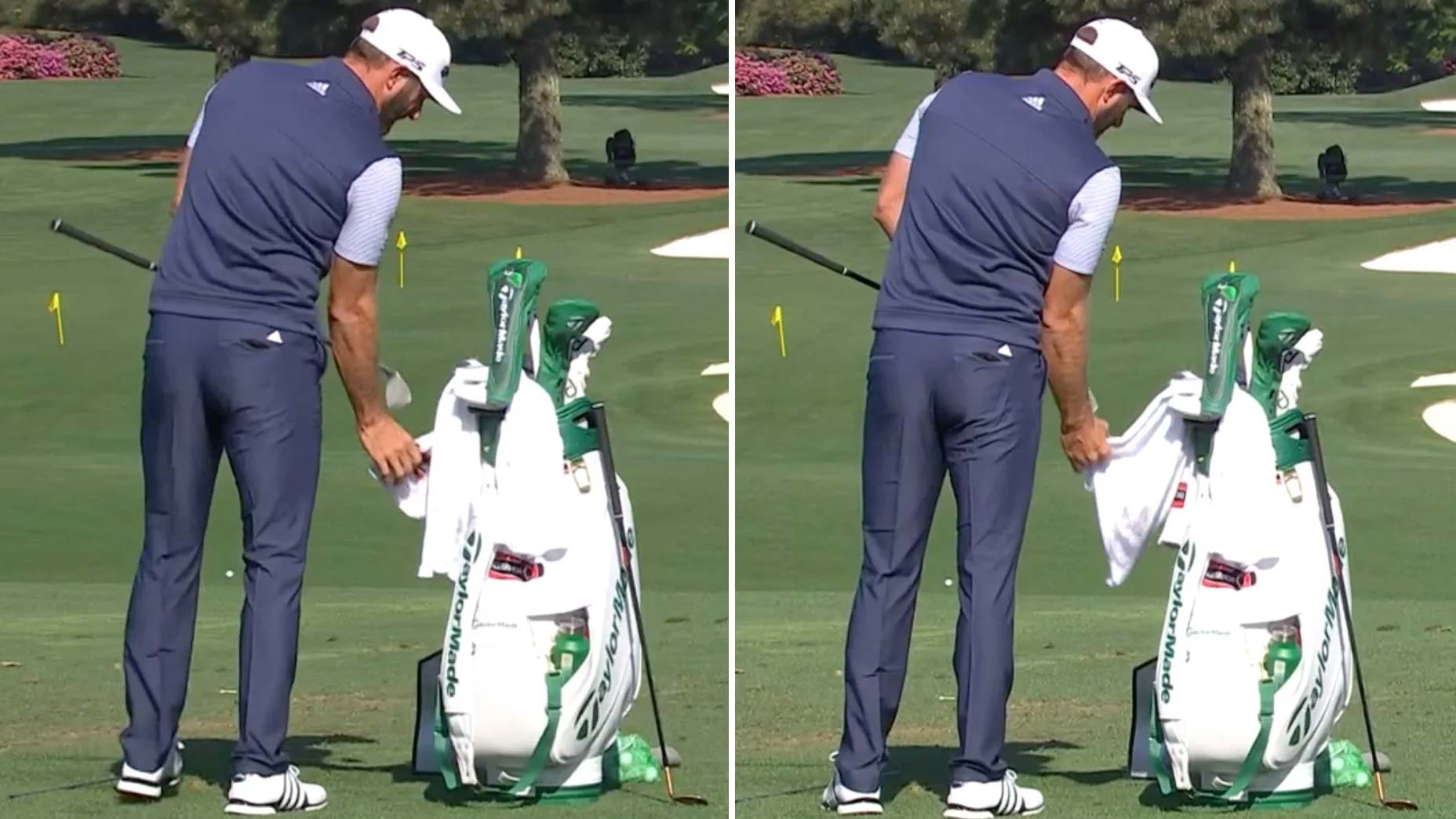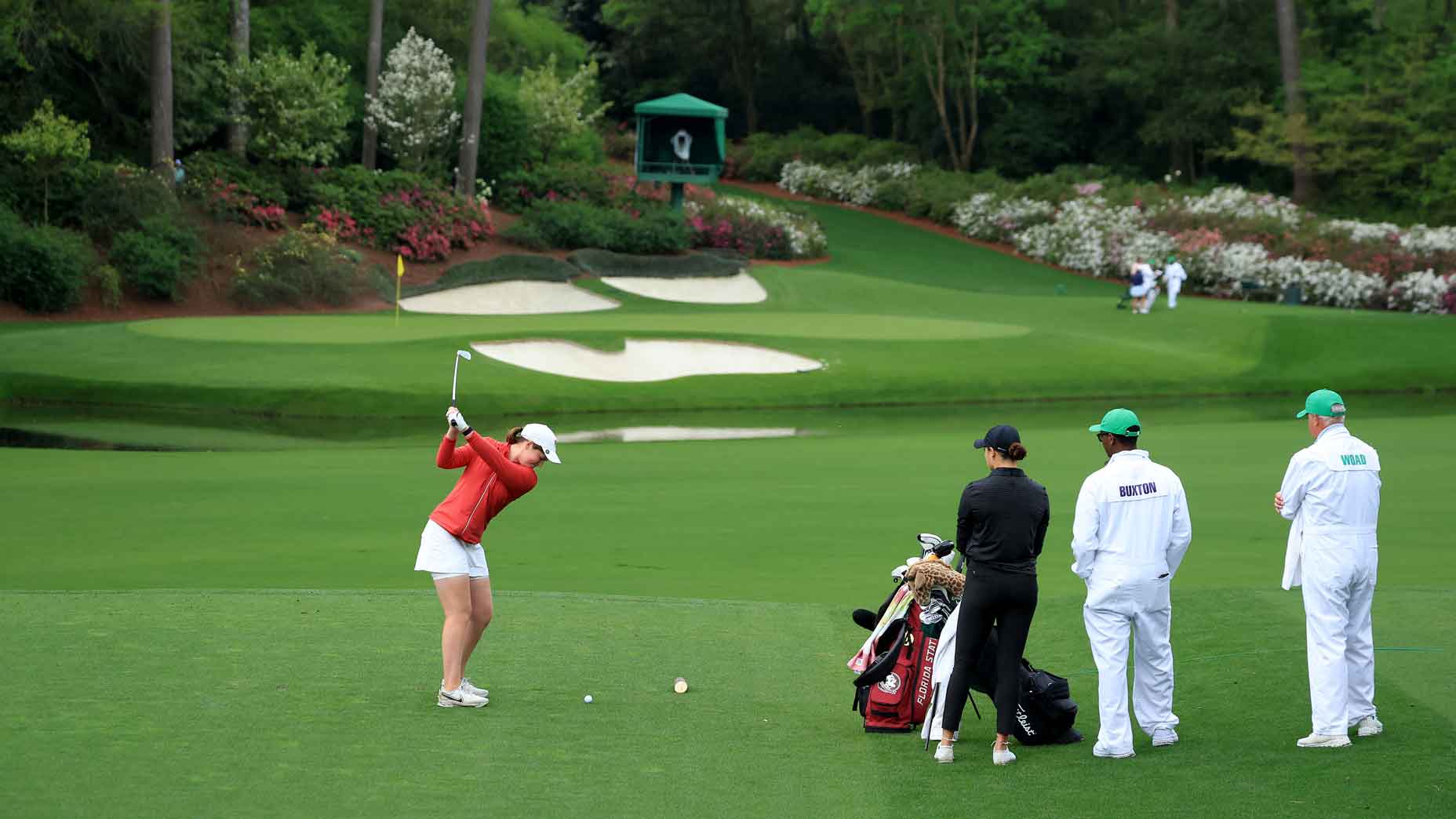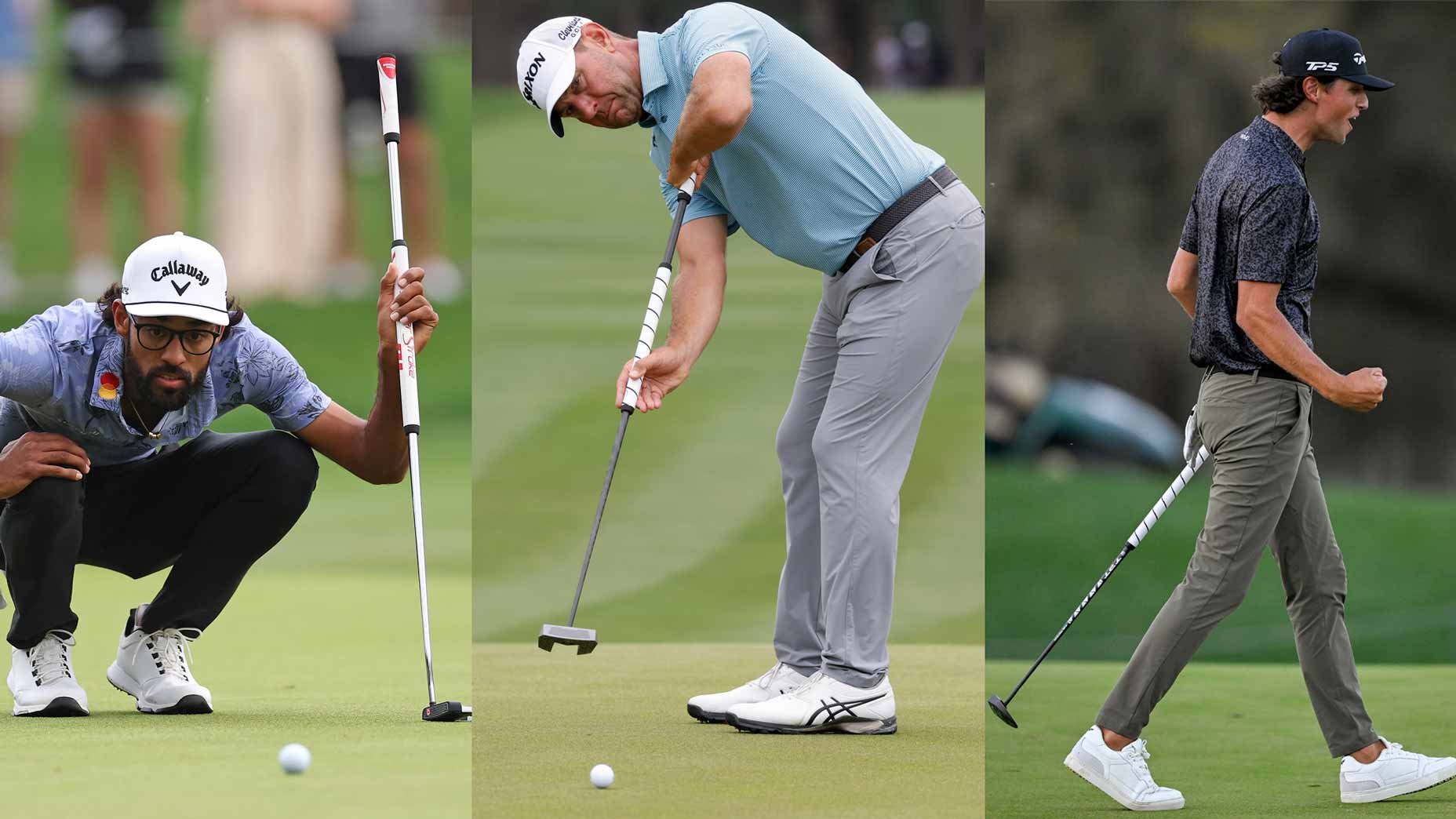‘It wasn’t glamorous’: Inside Dustin Johnson’s quest to fix his wedge game
- Share on Facebook
- Share on Twitter
- Share by Email
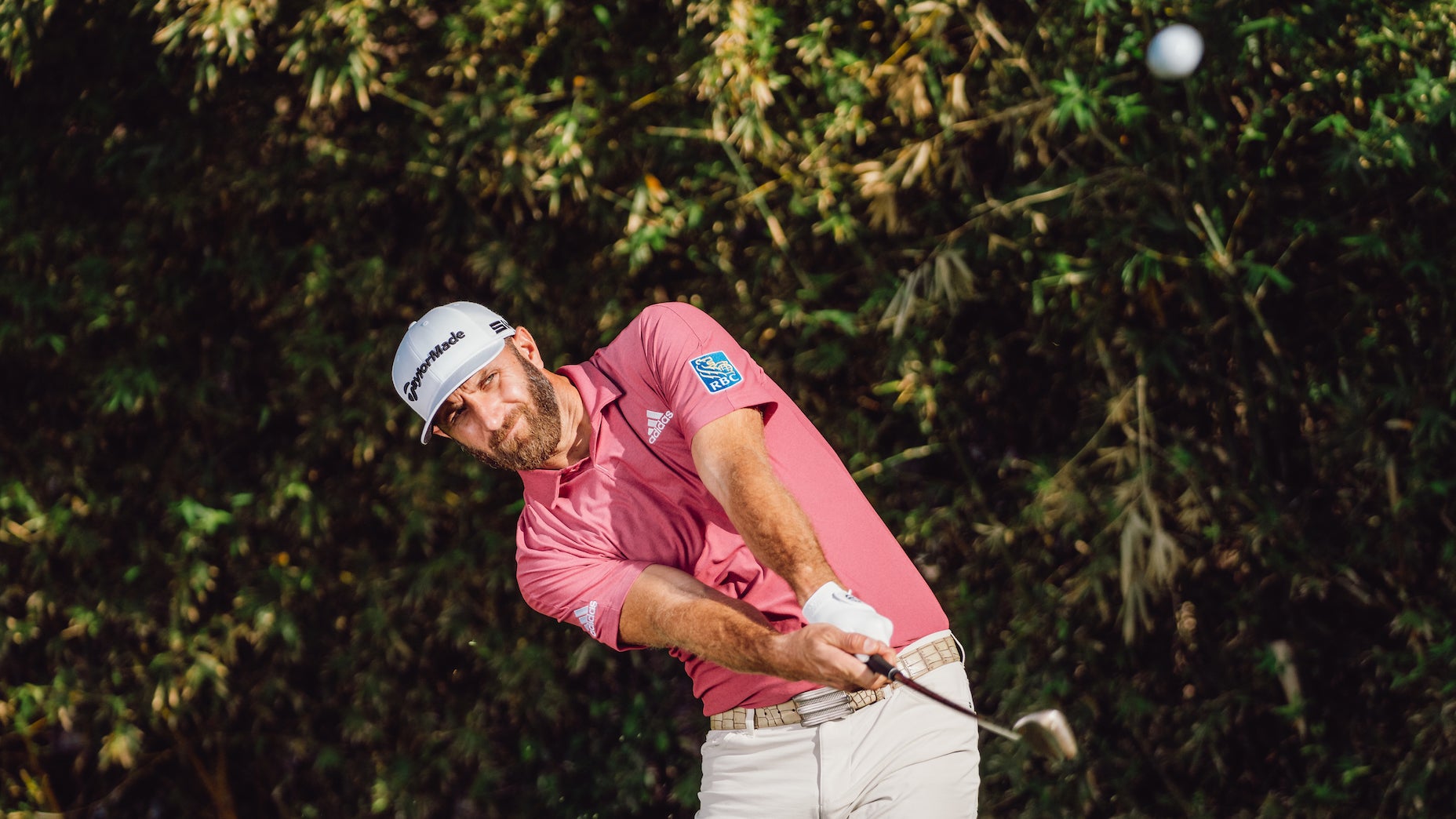
DJ's wedge play has made him one of the best golfers on the planet.
Getty Images
Dustin Johnson has always been a great golfer. He just wasn’t “legendary.” At least not yet. All the difficult stuff — from driving a ball 350 yards to dunking a basketball — Johnson could do with ease. What failed him at the very highest level in the early parts of his professional career were the tasks that couldn’t be solved with innate talent: getting wedge shots close.
This was a problem, because when you hit the ball as far as Johnson, you end up with a lot of wedges in your hand. And if you’re not scoring with those clubs, you’re neutralizing your biggest strength with self-inflicted errors.
Follow Dustin Johnson’s lead and make this practice routine adjustment to instantly improve your wedge gameBy: Jonathan Wall
So Johnson got serious. He bought a Trackman, and with his coach, Top 100 Teacher Claude Harmon III, went to work. At the range, Harmon would call out yardages to Johnson, who’d then try to hit them on the number. They practiced it for hours.
“It wasn’t glamorous,” Harmon says, “but we got really good at hitting numbers.” Unglamorous, maybe, but it worked. Between 2013 and 2015, Johnson finished 113th, 80th and 53rd in approaches from between 50 and 125 yards. Between 2016 and 2018, he finished 4th, 7th, 15th — and won two majors along the way, His advice for the rest of us? “The best way to do that is to go to the driving range and practice a bunch of them,” Johnson says, smiling. “But you got to know how to practice first.”
DJ’s Wedge Formula
Precise distance control is the hallmark of any good wedge game. Most golfers tackle distance control in one of two ways: 1) they use the Dave Pelz–designed clock system, in which golfers intentionally shorten or lengthen their backswing to control their distances, or 2) they rely exclusively on feel. Johnson opts for something in between.
“I’ve got three swings with each wedge: a half, a three-quarter and a stock swing,” he says. “I work on all three swings with all three wedges.” Johnson’s slightly unusual combination of three wedges — a pitching wedge, a 52-degree and a 60-degree — and his three swings give him a “soft,” “medium” and “hard” option for each. He’ll take note of the numbers for each swing with each wedge and use his feel to make adjustments in-between.
“I don’t worry too much about how each swing looks; it’s more about how they feel,” he says. “Everybody is going to be different.”

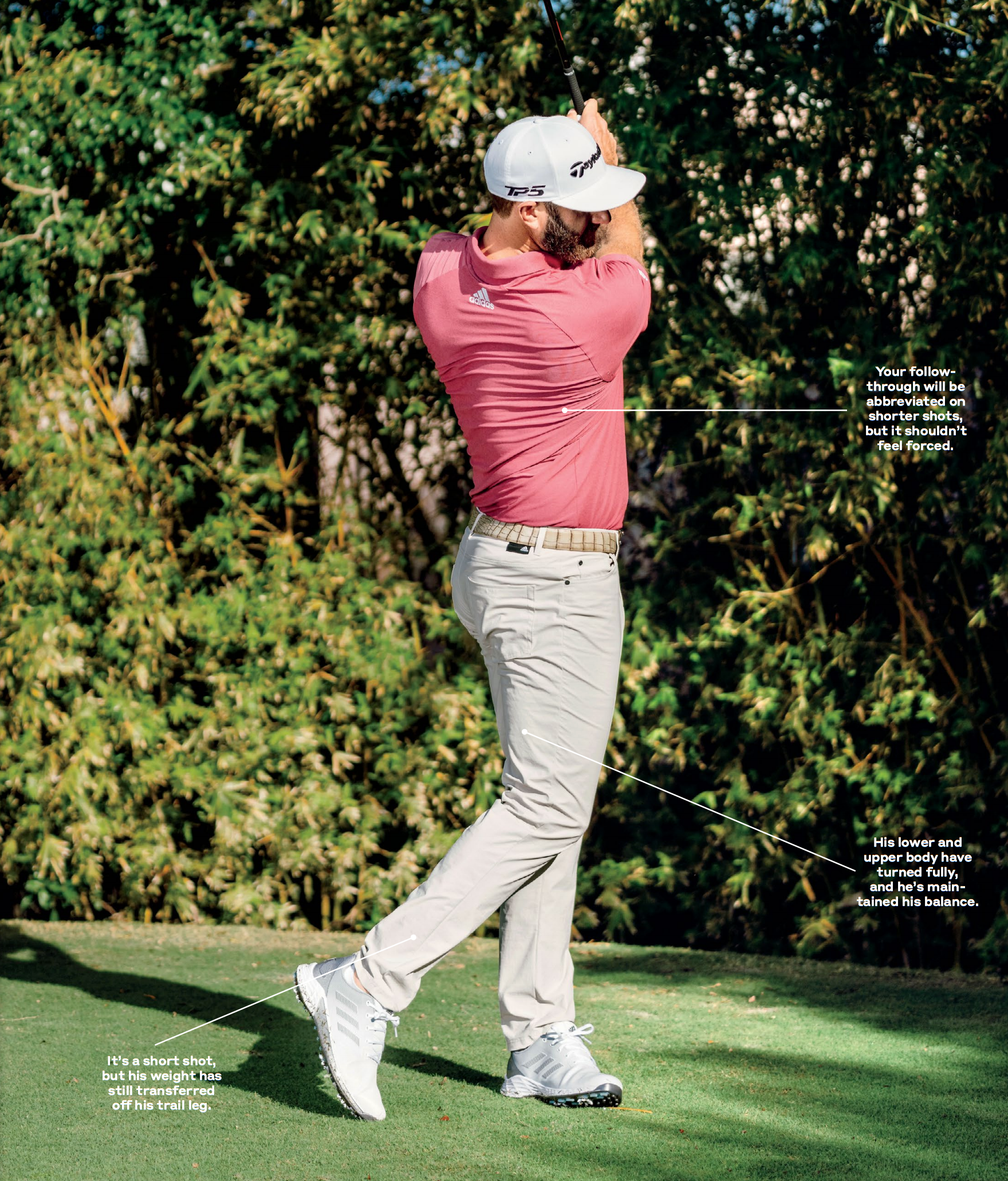
Stay Fast
Just because wedges usually entail short shots, it doesn’t mean they should be “soft” shots. When Johnson falls into that trap, he starts decelerating and his contact suffers.
“Dustin’s problems arise when he gets slow in his swing,” Harmon says. “It’s true for his driver, and it’s true for his wedges.”
Fact: When it comes to your wedges, “the strike is everything,” Johnson says. “Inconsistent strikes make it impossible to control distance.”
His recipe is simple: Set your weight slightly forward at setup and make a fast rotation through the ball with your upper body. Those two things will help you control the spin and send the ball on an aggressive, lower flight.
“Amateurs want to hit wedges high, but if you watch the best wedge players, they all hit them low,” Johnson says. “That’s what I’m trying to do. I want to make an aggressive move and flight it low and go pin hunting.”
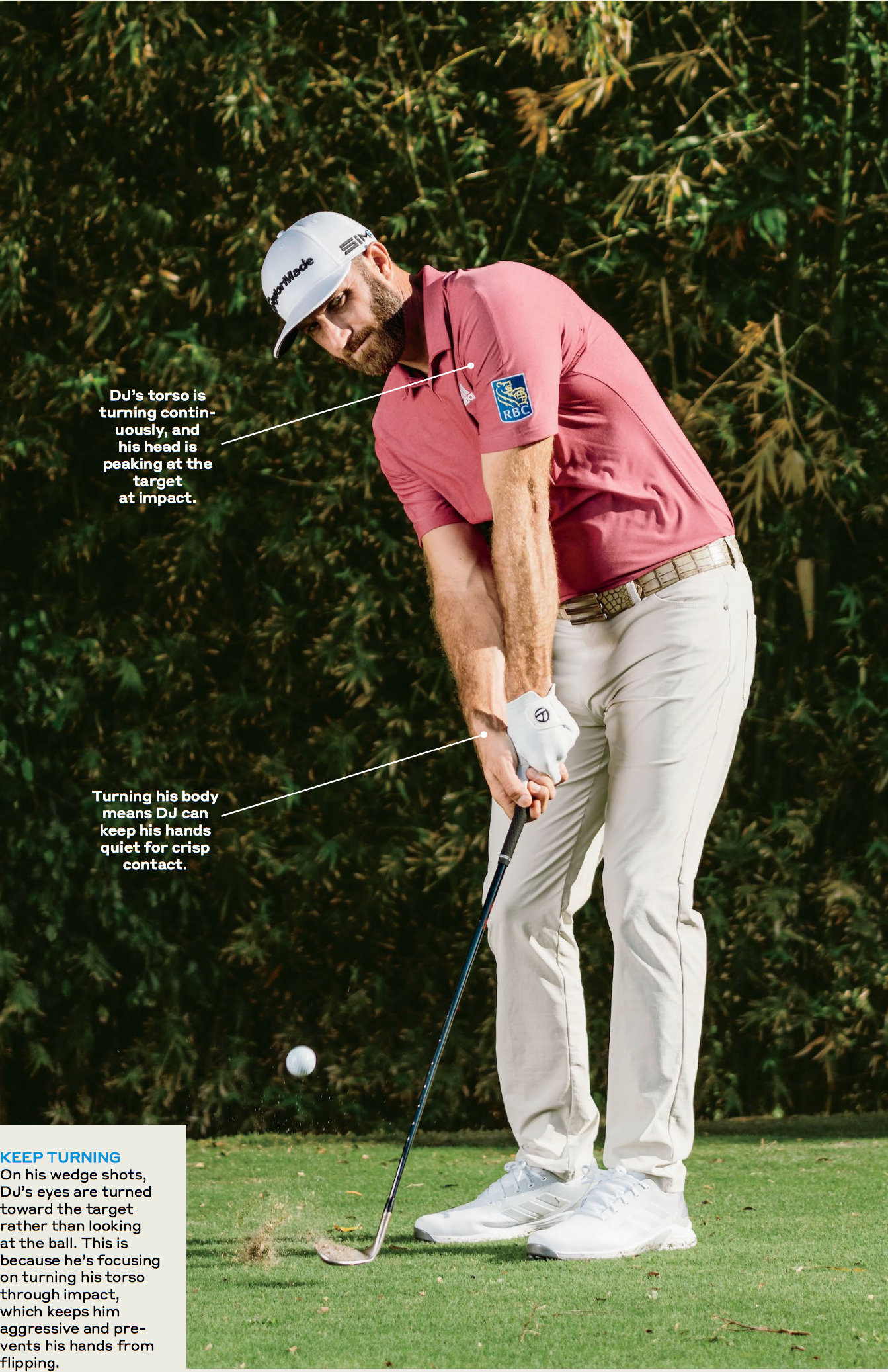
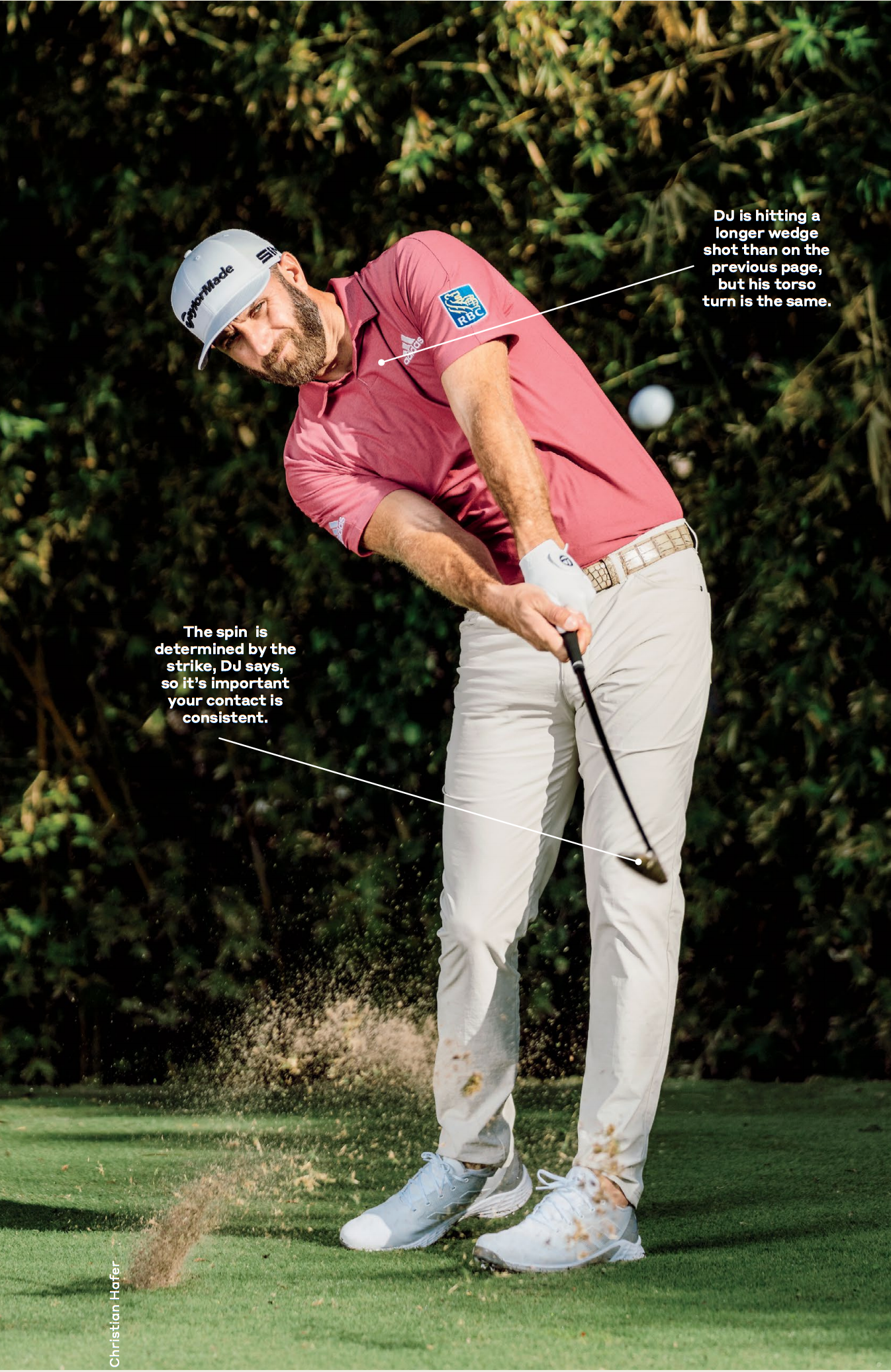
Want to really dial in your wedges? Schedule a fitting with the experts at 8AM Golf affiliate True Spec Golf.
Get your wedges dialed in
Latest In Instruction

Luke Kerr-Dineen
Golf.com Contributor
Luke Kerr-Dineen is the Game Improvement Editor at GOLF Magazine and GOLF.com. In his role he oversees the brand’s game improvement content spanning instruction, equipment, health and fitness, across all of GOLF’s multimedia platforms.
An alumni of the International Junior Golf Academy and the University of South Carolina–Beaufort golf team, where he helped them to No. 1 in the national NAIA rankings, Luke moved to New York in 2012 to pursue his Masters degree in Journalism from Columbia University. His work has also appeared in USA Today, Golf Digest, Newsweek and The Daily Beast.

